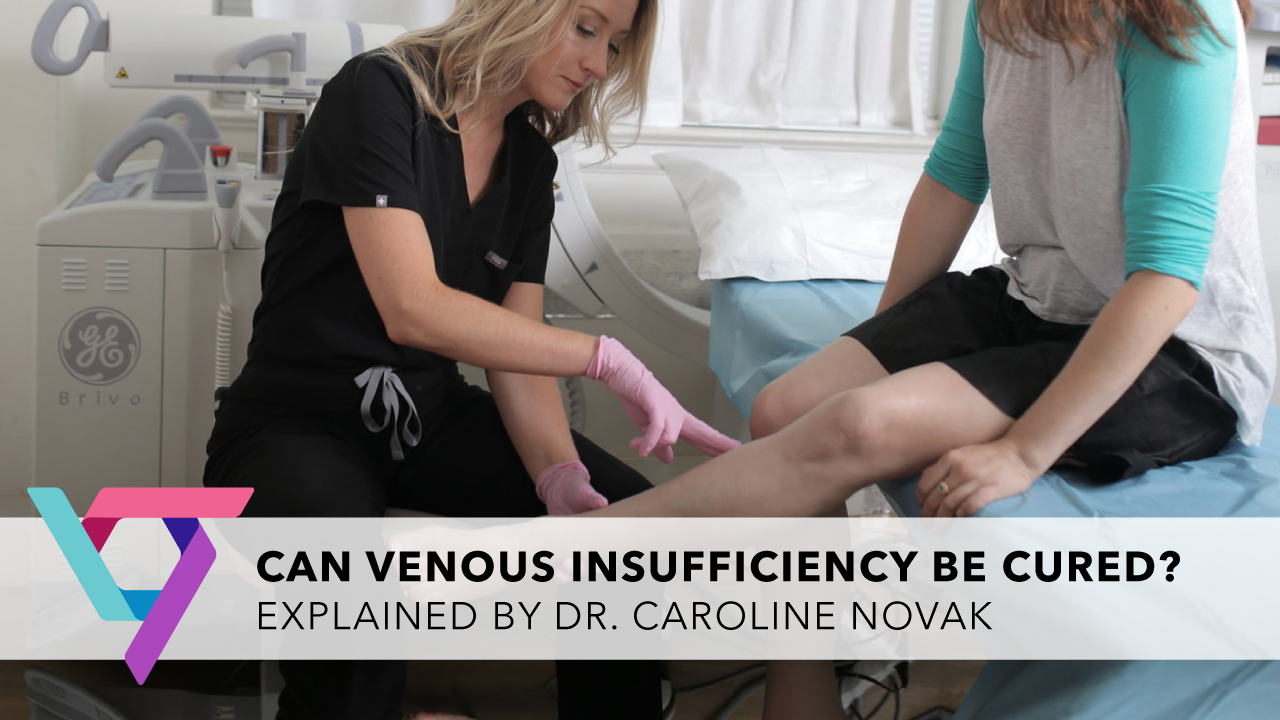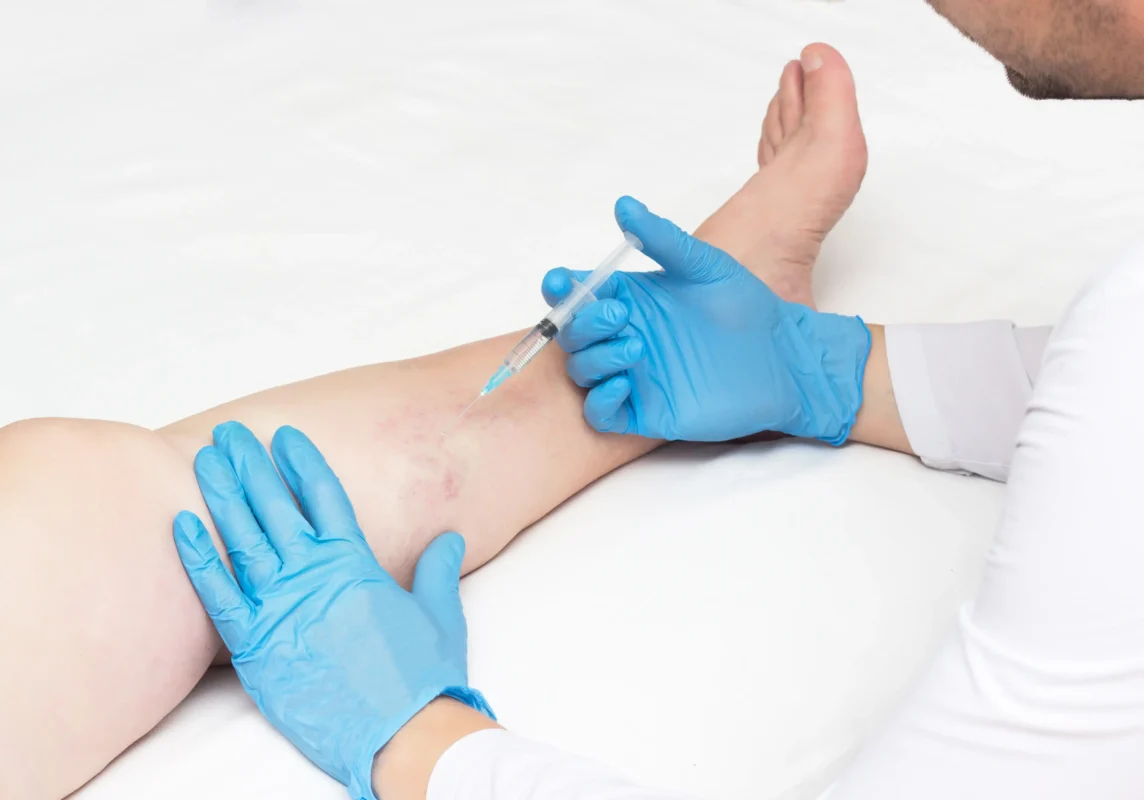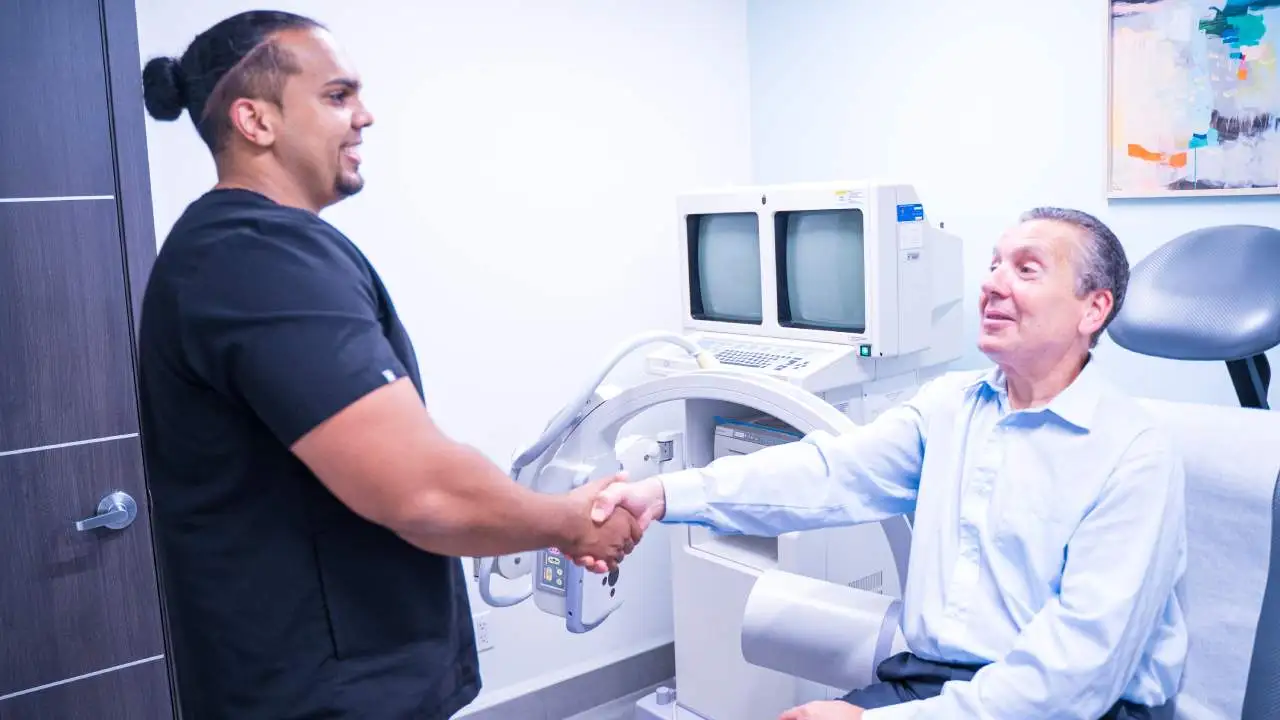Venous Insufficiency Symptoms | Signs of Vein Disease
Venous insufficiency, also known as vein disease, is a circulatory disorder of the legs. If you understand why vein disease occurs, you’ll gain a better understanding of why it causes certain symptoms, which include:
Leg Cramping
Also known as “Charley horses”, when they occur in the gastrocnemius (calf) muscle, leg cramps can be a sign of venous insufficiency. Leg cramps are the result of one or more of your leg muscles suddenly contracting. Cramps lasting anywhere from a few minutes to as long as 24 hours and can be very uncomfortable. You’re more prone to receiving leg cramps if your dehydrated or taking certain medications, but venous insufficiency can increase your risk of cramps under any circumstances.
Restless legs
Venous insufficiency is a common cause of restless leg syndrome. Although it sounds benign, restless legs can interfere with sleep, work, and have a profound impact on the quality of life.

Swelling in the Feet or Ankles
Venous insufficiency can cause fluid retention and swelling in the feet and ankles. Also known as edema, this condition may be worse on one leg or similar on both.
Burning
Itching or burning is common in venous insufficiency, particularly over areas of dense spider veins, also known as telangiactasias. This sensation is caused by compression on the nerves that receive sensation on the surface of the skin.
Heaviness
A sensation of fatigue, or heaviness, is the most common symptom of venous insufficiency. The heaviness is due to the excess blood in the legs.
Varicose veins
Varicose veins are larger, blue veins that lie slightly under the skin. Varicose veins may be torturous, or twisted, and may bulge outwards and appear knotted.
Spider veins
Spider veins, also known as telangiactasias, are thin red or purple veins that lie just underneath the skin’s surface. They tend to form in clusters and have a spidery appearance.
Skin Changes
Skin changes, known as stasis dermatitis, are a direct result of vein disease. Congested veins cause a small amount of blood cells to leak out of the vessels and stain the skin a reddish brown.
Ulcers
As a result of poor circulation, shallow wounds called ulcers can develop under areas of unhealthy veins. These wounds tend to heal slowly and cause significant discomfort.

What exactly is Venous Insufficiency?
Veins are the blood vessels that carry blood back to the heart after the oxygen has been used by the body. The veins in the legs have a difficult job because they have to carry the blood up, against gravity. They do this using the help of one-way doors called valves that are scattered along the vein. The blood flows past a valve,and the valve closes, preventing the blood from falling back down towards your feet. Over time, the valves can deteriorate and blood leaks back downwards towards the feet. This causes increased pressure in the veins that are full of excess blood. New spider and varicose veins may form on the surface of the skin and many people develop significant discomfort, including:
All symptoms due to vein disease tend to get worse at the end of the day, with prolonged sitting or standing, and in the heat. Exercise usually causes partial or full relief since squeezing the calf muscles pushes blood up to the heart.
How a Vein Doctor Can Help You
While you may be able to spot symptoms of venous insufficiency, such as burning, itching or leg cramping, an expert vein doctor can help provide you with a proper diagnosis of your condition. So, it’s vital to receive an evaluation from a vein specialist. Here are some additional reasons you should be evaluated by a vein doctor:
Complete evaluation
Your vein doctor will provide you with a full evaluation, using tools, such as a duplex ultrasound to check how well your blood is flowing in your legs. You can also expect your doctor to look at the veins in your leg while you are standing or sitting. This helps them to know if you have varicose veins and spider veins.
The Best Vein Treatment Options:
Your vein doctor will also suggest a customized treatment plan for you. For instance, you can expect your vein doctor to discuss your treatment options and the efficacy of each treatment based on your condition. Since treatment can be based on how severe your condition is, your age, your medication tolerance level and the symptoms you personally experience, it’s important to discuss your treatment options with your physician. Some of the most recent technologies employed to treat venous insufficiency include:
- Radiofrequency Ablation
- VenaSeal (Vein Glue)
- Sclerotherapy
- Laser Ablation
Final Thoughts
Determining whether or not you have venous insufficiency isn’t something you need to do on your own. You can take advantage of a professional team of vein doctors to get the job done such as the vein doctors at the Vein Treatment Center. From New York to New Jersey, you can leverage the expertise of vein doctors, such as Dr. Juan Montoya, Dr. Caroline Novak, Dr. Juan Montoya, Dr. Michael Nguyen and Dr. Sareh Rajaee. You can also take advantage of a high-quality team of board-certified doctors who have quality training from top U.S. medical schools and expertise in areas, such as venous medicine and interventional pain management.









